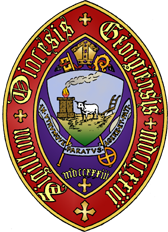As we approach the bicentennial of our founding in 2023, we will share the story of the Diocese of Georgia. This week we remember the beginning of Saint Paul’s in Augusta.
 James Edward Oglethorpe sent a party up the Savannah River in 1735 to build a fort as a refuge for settlers living near the first set of rapids. Oglethorpe named Fort Augusta for the princess who would become the mother of George III. In time, the trading post prospered. In April of 1750, the people who lived and traded in this area erected a church. Noting that their friendship with the indigenous population was “sometimes precarious,” they built the church under the shelter of the Fort.
James Edward Oglethorpe sent a party up the Savannah River in 1735 to build a fort as a refuge for settlers living near the first set of rapids. Oglethorpe named Fort Augusta for the princess who would become the mother of George III. In time, the trading post prospered. In April of 1750, the people who lived and traded in this area erected a church. Noting that their friendship with the indigenous population was “sometimes precarious,” they built the church under the shelter of the Fort.
The Trustees of the Colony of Georgia meeting in London shortly thereafter sent to Augusta the Rev. Jonathan Copp, a Connecticut native and clergyman of the Church of England. He left London in 1751 with window glass, church furniture, and a deed to 300 acres of land to cultivate for his support. We are told that he arrived full of enthusiasm, “with much the same temperament as St. Mark.”
There is a letter from Lambeth Palace in Saint Paul’s founding documents as the Archbishop of Canterbury was concerned that Mr. Cobb may not get his 20 pounds per year salary as it is based on voluntary contributions. The Archbishop feared that as there were no church wardens in Augusta how could the church function and the priest get paid? They needed strong lay leaders.
 The first report from Mr. Copp came six months later when he asked for a transfer to a church in South Carolina. He did say that 80-100 people a week attend divine worship and he had baptized 30 from both Georgia and South Carolina. But he added, “Here we have been under continual fears and apprehensions of being murdered and destroyed by the [native inhabitants] there being no one within 140 miles capable of lending us any assistance in times of danger—so far are we situated in the wild, uncultivated wilderness.” He was not granted the transfer for three years.
The first report from Mr. Copp came six months later when he asked for a transfer to a church in South Carolina. He did say that 80-100 people a week attend divine worship and he had baptized 30 from both Georgia and South Carolina. But he added, “Here we have been under continual fears and apprehensions of being murdered and destroyed by the [native inhabitants] there being no one within 140 miles capable of lending us any assistance in times of danger—so far are we situated in the wild, uncultivated wilderness.” He was not granted the transfer for three years.
Three more clergymen would come and go by the time the Revolutionary War ended. When the dust cleared from that conflict, there was no minister, and no church, as Saint Paul’s was burned, the parish records, and silver communion set lost. It would be five years before the church lands were sold and a new Saint Paul’s Church built. Saint Paul’s was planted in Augusta 72 years before there was a Diocese of Georgia and 90 years before there was an Episcopal Bishop of Georgia.
Pictured above: The drawing of the original Saint Paul’s; Saint Paul’s after the Great Augusta fire.
